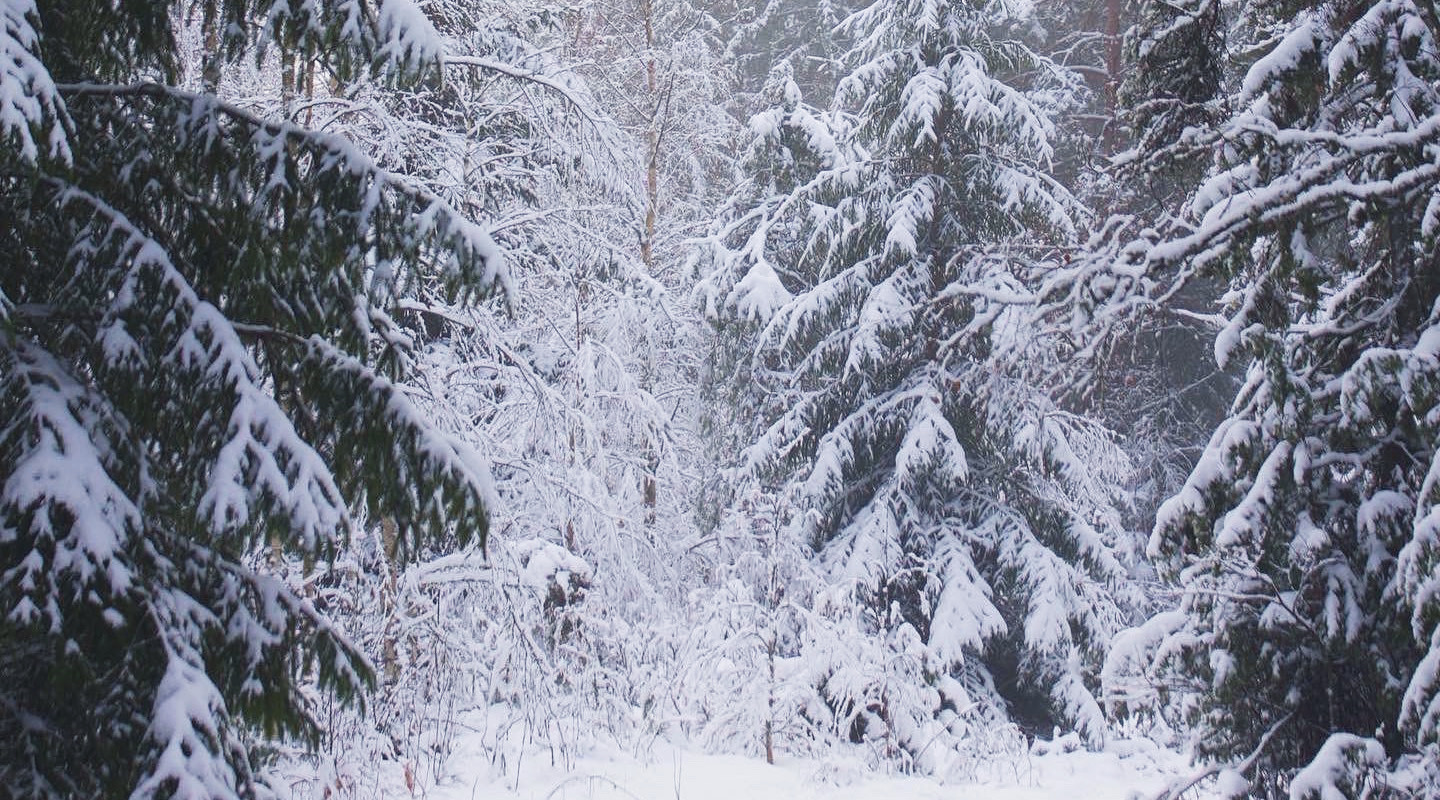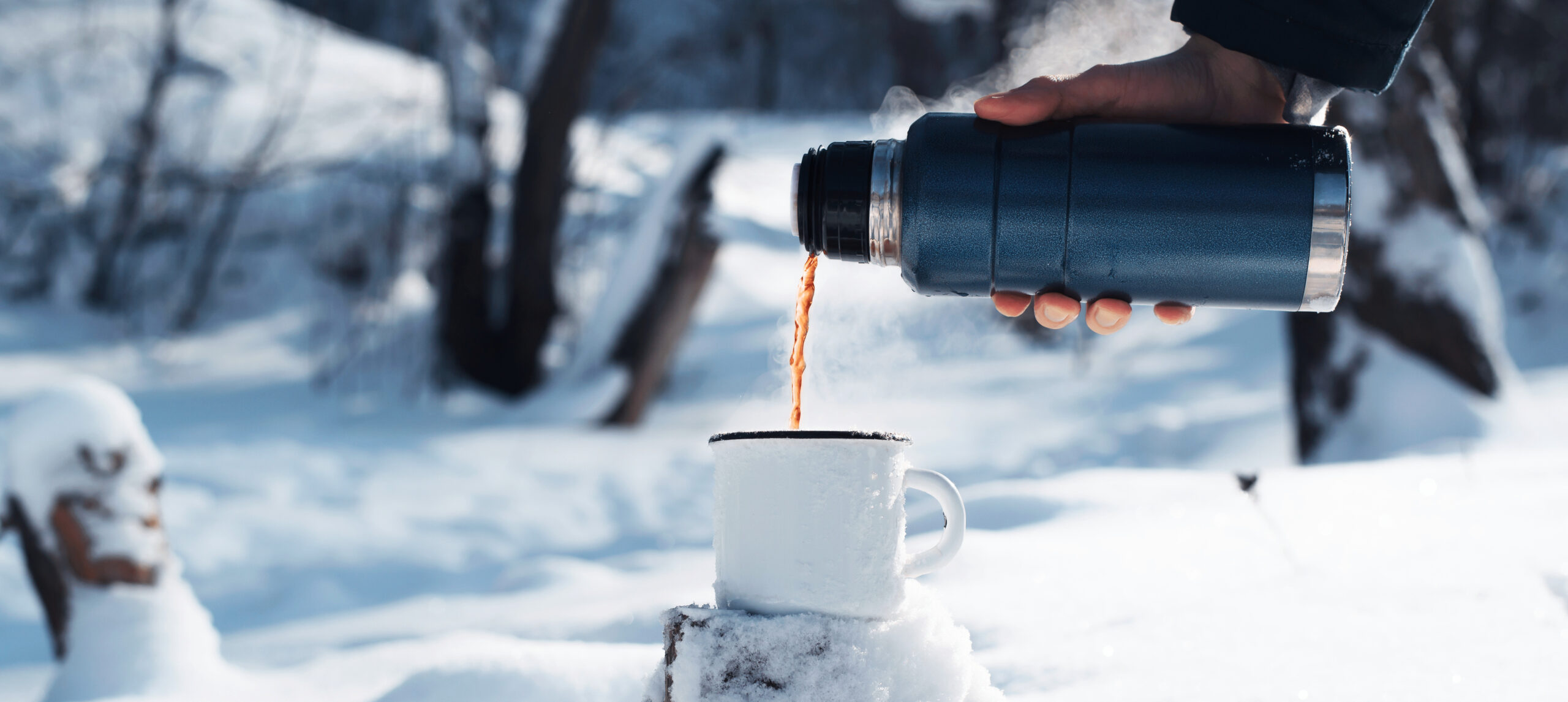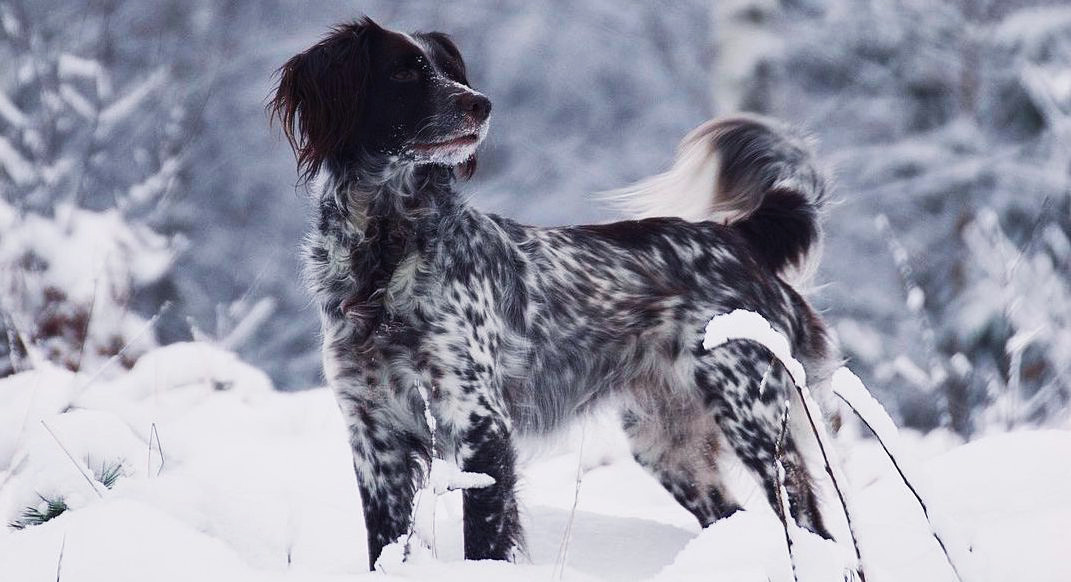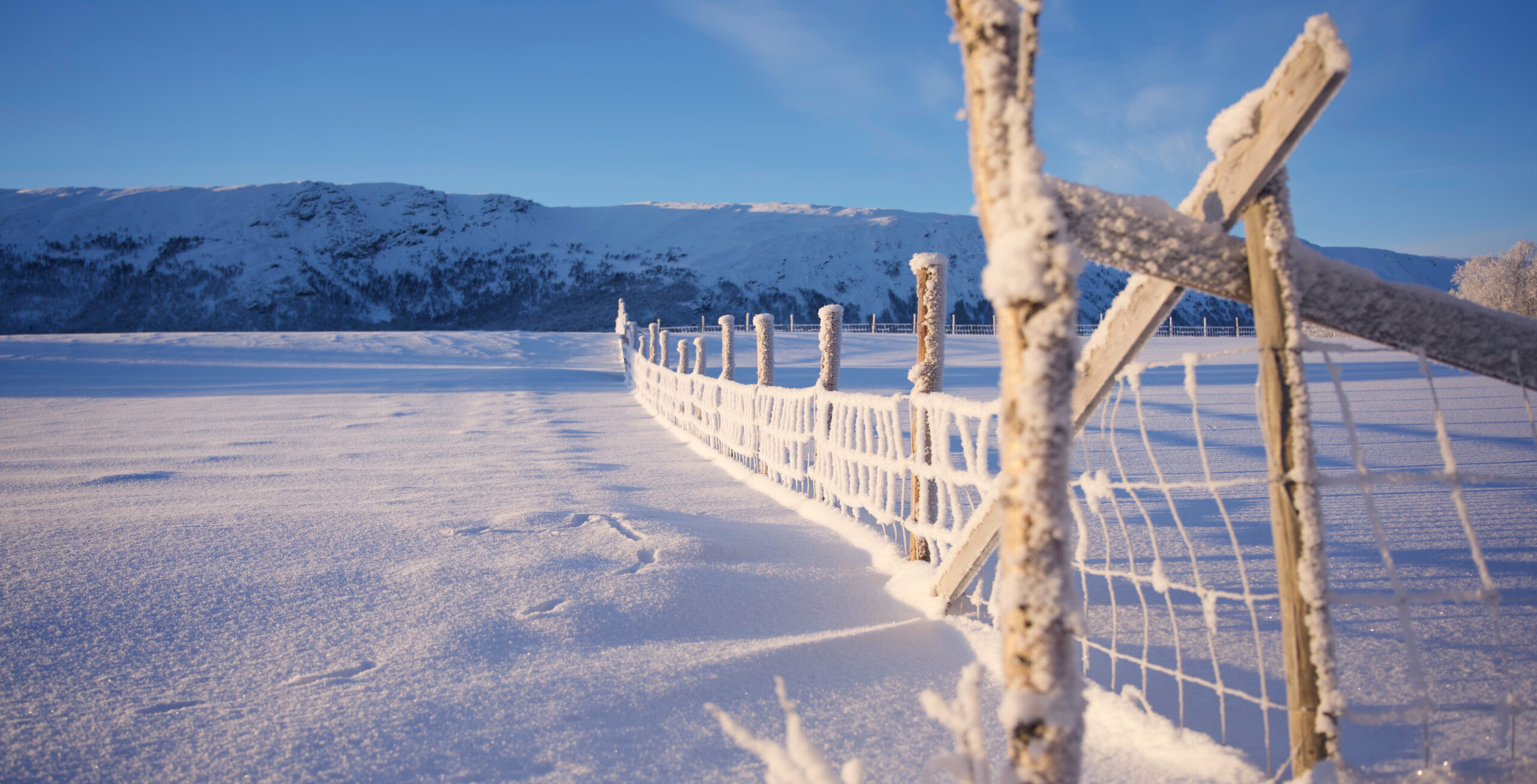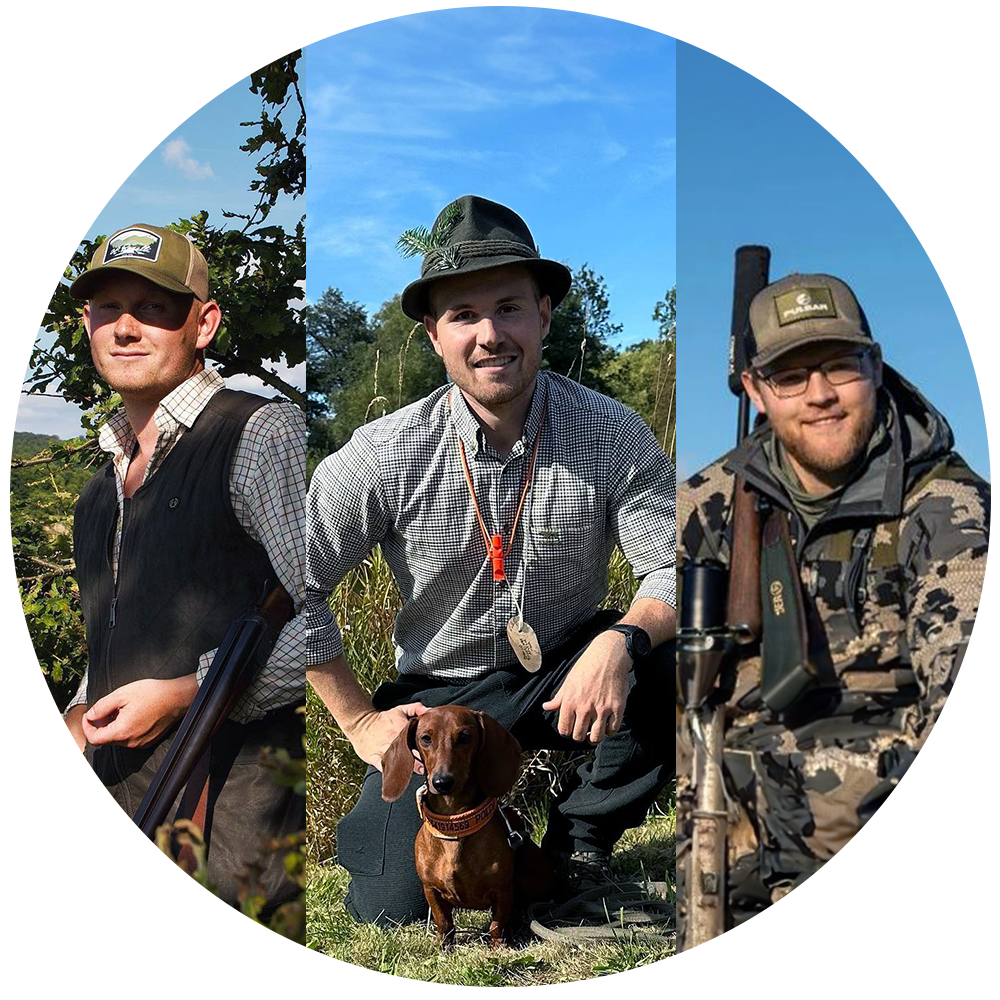
Winter, especially if you live further north, can make every hunt fairytale-like, at least by the looks of it. But behind the gorgeous views lie slippery surfaces, freezing temperatures, and the challenges that come with it. To see what they are, learn how to overcome them, and hear what magical experiences one can still achieve despite the obstacles, we spoke to Joel Henrysson from Sweden, Andreas Frengstad from Norway, and Christoph Studeny from Austria.
What’s your favorite place to hunt in winter?
Joel: Oh, this one is easy! We have a small cabin and hunting area out in the middle of nowhere in Småland, Sweden. Loads of snow, combined with the old and untouched forests, make it almost magical! It for sure is my favorite place to be!
Andreas: The forest. I have never hunted anything in the mountains in the winter, mainly because the huntable big game stays down low in the winter. I know a lot of people who go hunting ptarmigan with rifles in the mountains. Unfortunately, not an option in our area, so I don’t waste time traveling when I have other things to hunt close by. Even though it looks like a hunt that would suit me very well. Maybe sometime.
Christoph: Indeed, nothing beats an afternoon or evening in the snowy winter forest. Having a stalking hunt with my dachshund Poldi and, afterwards, sitting in the treestand for the last two hours of daylight.
What animals do you typically hunt during the cold season?
Christoph: We focus on wild boar and predator game during winter. In my opinion, it is the most fascinating hunt, especially when we get snow.
Joel: Mainly roe and fallow deer, also, a lot of wild boar. So pretty much the same as usual. We hunt a lot of deer with our dachshund all season. However, we usually refrain from it when it gets very cold and snowy because it wouldn’t be very ethical both for the deer and the dogs.
The one thing that does change, though, is that once we have cold and snow in the southern part of Sweden, my fox hunting peaks. Fox calling in the snow for sure is a favorite – it is extremely exciting and a good way to keep the population under control.
Andreas: For me, it is typically red deer. I am, however, going on my first top bird hunt in January, and I’m really looking forward to that. But red deer is what I mostly hunt in the winter. Moose every now and then, but not often, as we usually cut all the tags before the snow really sets in.
There are many options for small game, but I never have the time. The only thing I hunt are foxes. Usually, quite a few. Mostly by coincidence, but I have baits close to the farm to manage them a bit more effectively as they always come stumbling by.
Any particular rituals you have for winter hunts?
Andreas: Dress well. Always wool, and preferably several layers depending on temperature. Tying your boots properly is always important, but especially in the snow. Even with gaiters that cover them up, the laces will freeze. Not fun taking your warm gloves off to mess with icy and cold lace. If you stay seated, use rubber boots that are insulated; a totally different experience!
Joel: To add to what Andreas said, you also need to keep an extra eye and make sure you have sufficient backdrop and that your shooting angles are still safe due to the frozen grounds.
Christoph: As for less technical rituals, I prepare some food and tea for the coming cold hours in the woods. Nothing tastes better than a warm cup of tea while enjoying nature out of your treestand.
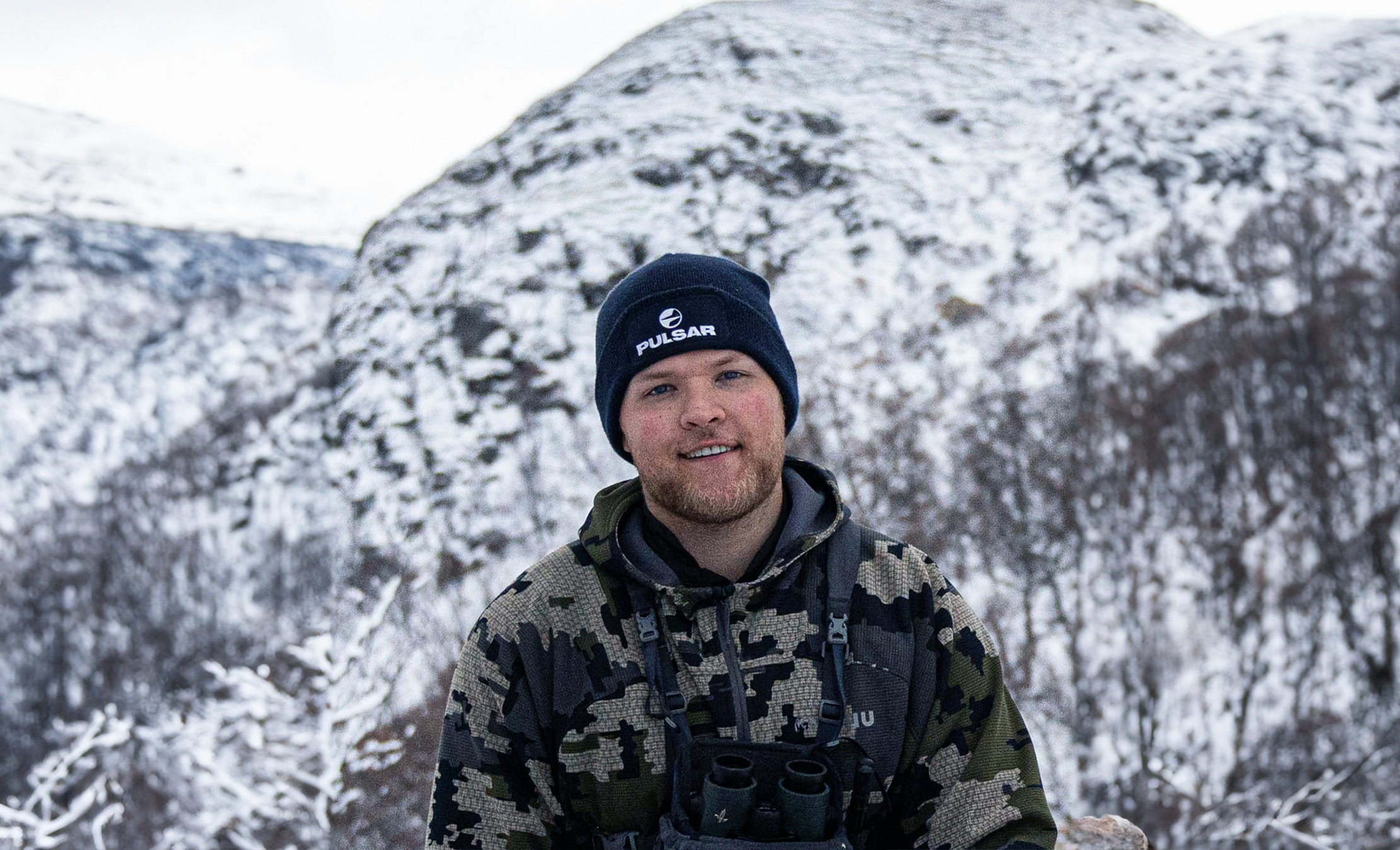
Andreas Frengstad
How do you make sure your equipment withstands the cold?
Joel: I keep an extra eye on the battery level as they tend to drain a bit faster in the cold. Also, for the rifle, make sure there are not too many thick layers of grease that could get cold and stiff, making the rifle perform poorly.
Andreas: Buy gear that can perform in the conditions I hunt. Cheaping out on gear will show when the temperatures drop. That goes especially for electronics. Knowing my Pulsar devices perform in all conditions is one less thing to worry about. I keep all spare batteries and power banks inside my jacket, if possible.
Clothing and shoes should also be thought through. Nothing worse than being wet and cold, especially when it could kill you. When hunting in temperatures well below freezing, becoming wet is a one-way ticket to hypothermia. There is, of course, a big difference between negative 5 and negative 20. One should, therefore, always consider the environment. Bringing spare wool clothing for hunts in sub -10 C weather is not a bad idea. The same goes for matches and fire starters. Having a way to heat yourself up or dry out is always nice.
Another pro tip, especially for hunting in snow, is to cover your muzzle/barrel end. Snow in the barrel, muzzle brake, or silencer can be devastating. Always a danger, but especially in snowy conditions.
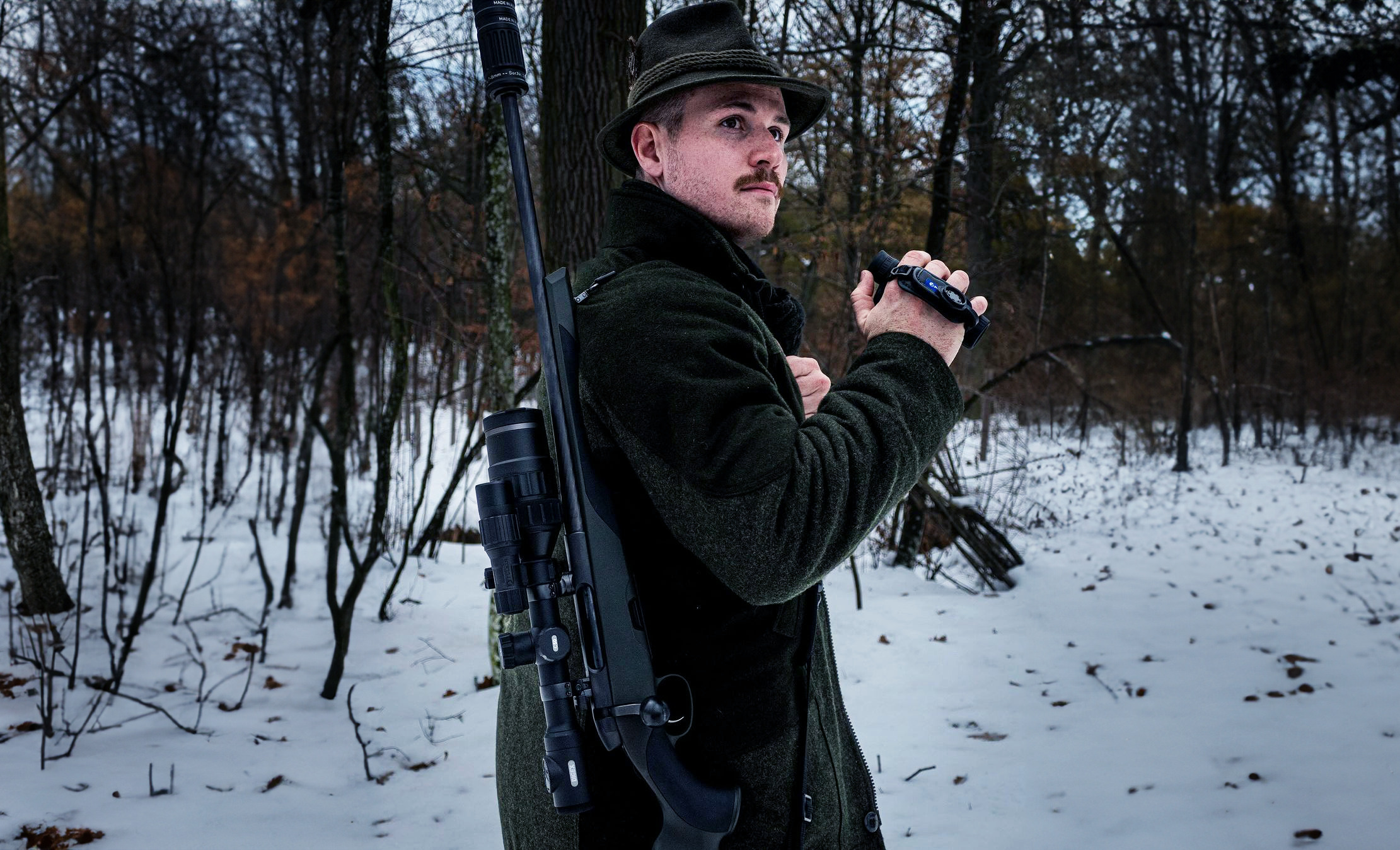
Christoph Studeny
Which Pulsar devices will you be taking on hunts this year?
Joel: Ah, this winter, I have an awesome combo! The Merger XL50 as a spotter/binos, and on the rifle, Talion XG35. Perfect for the winter wild boar hunting. I also do some wildlife inventory with the Merger; what a fantastic tool that is!
Andreas: The Telos LRF XP50 as my handheld, and then the Thermion Duo DXP50 on my main rifle. The Telos does everything I need when hunting, either seated or actively, as I usually do. I was really impressed with the quality and feel of the Telos. Will probably stick by my side for a long time as it is the perfect mix of size and performance.
Then, I will also be using the Duo. That means both day and nighttime action. When hunting during the day, one does not want to lose the benefit of the details natural light brings. Having the 4K channel is such a game-changer for those of us who cannot change the scope on the fly or have several rifles ready.
Christoph: I’m with Andreas here, too, as I’ve got my Thermion Duo DXP50 mounted and ready. But I will also use Digex C50. As for the spotters, I’m switching between Axion 2 XQ35 Pro, Axion XM30F, and Merger LRF XQ35.
What about yourself? How do you handle the cold?
Christoph: For winter, I focus on the right clothing. Mostly, I choose Loden for my clothes; this material is so cold-resistant.
Andreas: Back to my ritual of dressing well. Nothing worse than getting cold, especially if you are seated. A cold hunter is a bad hunter.
Joel: I don’t mind the cold that much, actually – I really like hunting in wintertime. I put on good clothing, a heat vest and then I’m eager to go hunting!
"This winter, I have an awesome combo! The Merger XL50 as a spotter, and on the rifle, Talion XG35. Perfect for the winter wild boar hunting. I also do some wildlife inventory with the Merger; what a fantastic tool that is!" Joel Henrysson
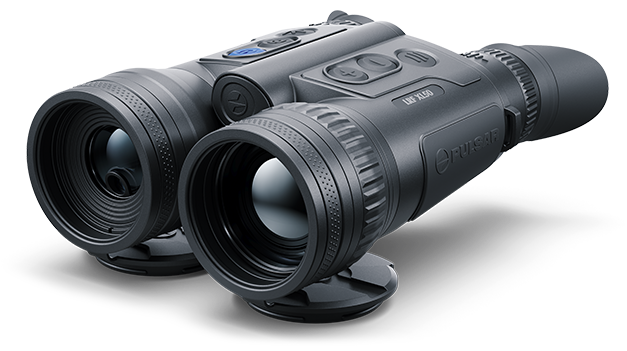
What’s your favorite thing about winter hunts?
Christoph: For me, it’s these moments when you get to be a part of this cold and snowy nature. Walking through the woods, being as quiet as possible, and getting very close to different species. The snow covers every noise in its special way and gives you an even stronger feeling of peace.
Andreas: The mood that the snow gives to everything. It is in no way beneficial for the outcome, but definitely a preferred setting if you enjoy a fairytale-like mood and, at times, miserable conditions.
Joel: It’s kind of hard to explain, but the snow just makes everything so much more exciting. In Sweden, in wintertime, it gets so dark so early, so the snow gives back a lot of energy to you. You can catch all movements more easily. I never get tired of being seated in the snow waiting for a wild boar or fox! Also, seeing all the tracks and being able to really tell what’s moving in the area builds lots of expectations as well. For better or for worse (smiles).
What’s the biggest challenge?
Christoph: On the one hand, to stay warm; on the other hand, trying not to sweat on the way to the treestand.
Joel: Hmm, the amount of snow makes it impossible to hunt with dogs sometimes. Also, if you have snow and then some days with warmer weather, the snow starts to melt, then freezes at night, and you get a layer of ice on top of the snow. A real killer for the dogs’ paws and the deer’s hooves.
Andreas: Wet and snowy grass. If you are seated, then staying warm is the biggest challenge. However, if you start moving, you will bump into snowy trees and bushes. After moving them, you’ll have snow falling on your oculars. Nothing worse than trying to get those clean again.
Then, it is also much more challenging to hunt in snow due to the fatigue of pushing through it. You suddenly cover much less ground. Of course, that goes hand in hand with the decrease in how far the animals walk. But then there is the lack of grip and solid foothold, which has almost sent me to the ER many times.
Any memorable stories you’d like to share from your winter adventures?
Joel: I have one favorite here. I was out hunting wild boar on fresh snow, almost in full moon. So, it almost felt like daytime. I had a huge group of wild boars pacing through the snow in a long, long line. I think there were about 15-20 boars in the group. Seeing them and their clear shadows from the moonlight was such a cool view. I managed to get one of them home with me – it served as that year’s Christmas dinner!
Andreas: I was spotting the hillsides one morning and saw a doe resting in the sunlight. The distance to her was 436 meters, so I wanted to at least cut that in half before considering a shot. The only problem was that I had to go through 100 m of open area. Being patient, only walking when she looked away, eventually got me into the belt of bushes that divides the forest from the open exposed mountains. Then, the problem was covering the remaining 100 m as this was on a hillside so steep that I had to use both feet and hands to keep myself from sliding down. It took time, way more than I thought, but trees and bushes kept me covered.
After reaching a patch of trees between me and the doe, I had to crawl even closer to the doe as trees and branches made the shoot unsafe from 200 meters. The problem now was that she could have seen me well. Luckily, our donkey down at the farm started playing, keeping her distracted. If you have ever heard a happy donkey, you know. When I finally got to a spot with a clear line of sight, there was no way to get into a solid position. I ended up laying my pack on a tree growing at an angle and thereby had a solid platform for the rifle. Myself, however, I was lying in the snow on a steep slope. Before I could get behind the rifle, I had already slid several centimeters down. I ended up tying my dog leash to the tree so that I could stick my foot through the end loop.
Given that the doe was lying down in the snow, it had to be a neck shoot. With my rifle securely resting on my pack and my body lying on its side supported by the leash, I then had a rock-solid platform. I let the 150gr Hornady GMX SF fly, and the doe only rolled one time before stopping right next to where she had been resting. A very successful hunt.
Now, I only had to drag her 500 meters back down to the road – easier said than done! But here is a pro tip: to keep it all clean, I only gutted her in the field. Then I zip-tied her back shut and dragged her down by the leash. Made the process a lot cleaner and more hygienic.
Christoph: It’s the beginning of December, we got snow and are able to get into our hunting grounds. The end of the season for roe deer is near, and I want to make sure to get one or two more for our deer management.
It was a cloudy but warm winter day. The snow started to melt, and Poldi and I got out in the woods around 3 pm. We stalked as quietly as possible through our grounds. We saw enough roe deer up to 30 m in front of us, but sadly, only bucks which were already closed. But I had the feeling, and so we tried not to disturb them and continued our stalk.
In the end, it paid off when we saw a calf in front of us, which wasn’t in the best condition. Earlier in my hunting career, the next thing would be to pull the trigger. But nowadays, and especially because of the invention of thermal devices, I kept calm and observed the area around the calf to see if there were more roe deer. And I was able to spot another buck and a doe coming towards the calf. After observing them for a while, it was clear that the calf and the female belonged to each other.
I waited for the perfect situation and took, because of ethics, the calf and, afterward, the doe. What a successful hunt! Poldi was sitting next to me, observing the whole time and keeping quiet, which made me very proud. He felt it as I felt it, and so we were successful as a team. This is what made this story so special. In a year, we grew into a good hunting team, and we are successful together in what we do and love – taking care of nature and never rushing the decision to pull the trigger.
Before purchasing any night or thermal vision device, please make sure you adhere to the local legislation and only use it when it is allowed. Our ambassadors come from various countries and travel a lot, which allows them to test different devices. We do not encourage or support the illegal use of our devices in any events. If you wish to learn more about export and sales restriction policy, please visit the following link: Export and Sales Restriction Policy.
